Table of contents
Do you know which fruits are indicated for diabetics?
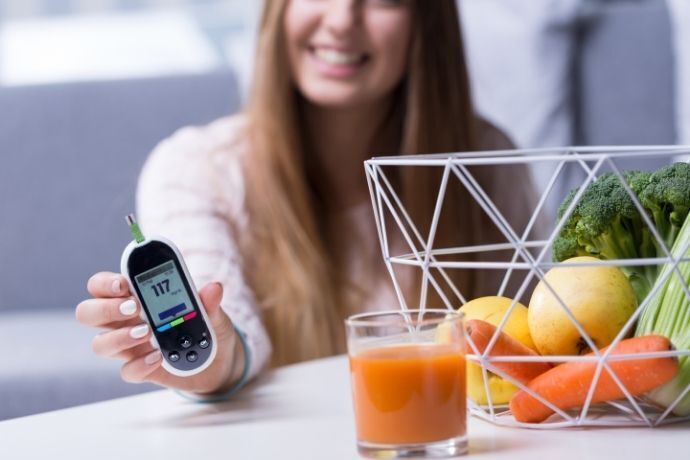
For diabetics, fruits are not only healthy, but are also an excellent alternative when the urge to eat sweets hits. However, not all fruits are recommended, because they can raise blood glucose levels. Therefore, it is important to understand the nutritional value of each one of them and which ones should or should not be part of the menu.
To make it easier, throughout this article, we list the best fruits for diabetics. Here will be addressed the properties, care and the correct way to consume them. Also check out why juices can be harmful. Soon below, read this and other information about this disease that affects thousands of Brazilians!
Understanding More About Diabetes
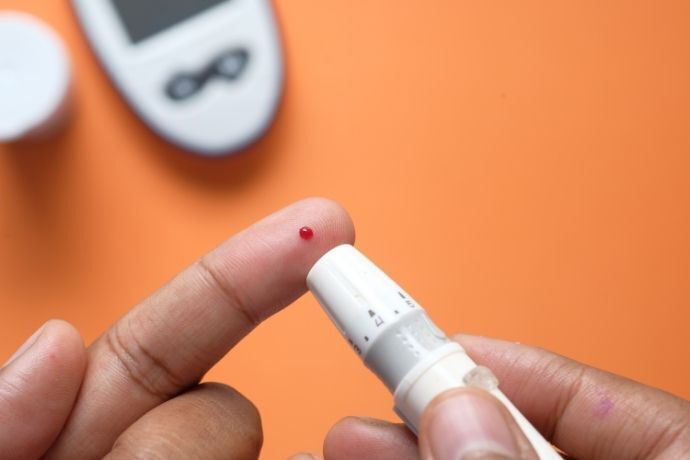
Diabetes is a chronic disease that can develop in many ways. It is common to think that the problem is linked only to poor quality food. However, the disease also has genetic origins or triggered by the use of some medications. Below, understand more about diabetes, the dangers and how food can help.
What is diabetes?
Diabetes is a chronic disease triggered by excess sugar in the blood. Its origin happens in numerous ways, characterized by dysfunction of insulin production. Insulin is a hormone produced by the pancreas, responsible for transporting glucose to the cells.
Generally, this disease is caused by a bad diet, i.e., foods rich in carbohydrates and sugars, such as pasta, bread, chocolate and ice cream, for example. On the other hand, the problem can also be hereditary and the pancreas cannot produce insulin. Therefore, diabetes is divided into a few types:
Type 1: in childhood and adolescence, the pancreas stops producing insulin because the immune system cannot inhibit the antibodies that attack the hormone;
Type 2: insulin becomes resistant over the years, being the most common diabetes and is associated by bad eating habits;
Gestational Diabetes: the disease develops during pregnancy, due to the production of other hormones by the placenta, hindering the effect of insulin and may or may not remain after birth;
Pre-diabetes: the glucose rate increases, however, it is not enough to be considered type 2 diabetes;
Other types: arise from the use of medications, such as corticosteroids, diuretics, and contraceptives, as well as pancreatic diseases and genetic abnormalities.
Dangers and care of diabetes
Once diabetes is diagnosed, often when it is already at high blood sugar levels, there are some dangers and care of the disease. The body presents symptoms, such as: gradual loss of vision, increased appetite, dry mouth, excessive thirst, rapid weight loss and urge to urinate beyond normal.
Moreover, with uncontrolled diabetes, the chances are greater of developing cardiovascular diseases, infections, neuropathy and permanent blindness, and even cancer. Therefore, to avoid its worsening, it is necessary to take medication correctly, have a healthy diet and exercise regularly.
How can diet help improve diabetes?
Although diabetes has no cure, the disease can be kept stable with the help of medication, associated with a healthy diet. The foods, mainly natural, have vitamins and nutrients capable of keeping the sugar levels balanced or slowing down its metabolic process.
Thus, the dietary re-education is extremely important for diabetes to be controlled for longer. The exchange for healthy foods ensures that blood glucose will not change, in addition to increasing sensitivity to the insulin hormone. Moreover, it decreases the chances of complications occurring as a result of the disease.
Why are some fruits dangerous for diabetics?
Just as some foods bring risk to diabetics, some fruits can also be dangerous. This is because they are classified by the glycemic index, a factor that measures the speed with which sugar reaches the bloodstream after the consumption of certain food.
The glycemic index has a value of 0 to 100, being formed by groups of foods with low (0 to 55), medium (56 to 69) and high (70 to 100). Therefore, people with diabetes should opt for fruits with low to medium GI, because they take longer to reach the peak of blood sugar.
On the other hand, fruits with high GI should be avoided or consumed with the guidance of a nutritionist, because the inadequate amount can cause hyperglycemia, in addition to the typical symptoms of diabetes.
Best fruits for diabetics
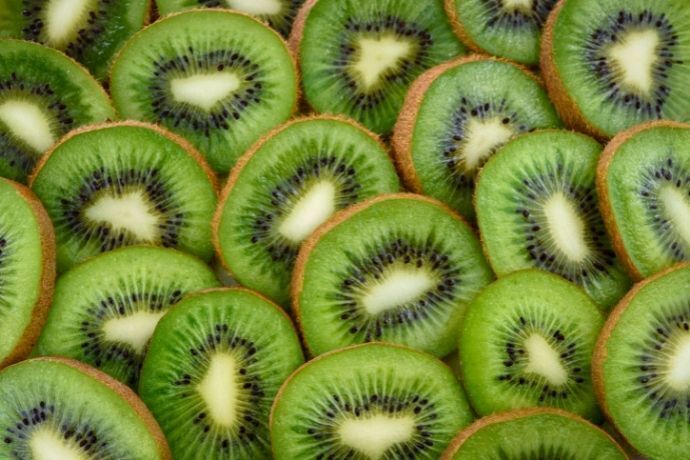
All fruits are nutritious and bring several health benefits. However, many of them are inappropriate for causing blood sugar spikes. In this topic, know the best fruits for diabetics, in addition to their properties and the correct form of consumption. Check below.
Plantain
Originating in Asia, the banana has more than a thousand variations and for diabetics the most suitable is the silver banana. It is rich in fiber, vitamin C, B vitamins and minerals such as potassium, magnesium, manganese, calcium and iron. In addition, it has low calorie, about 89 kcal per 100 g and lower levels of carbohydrates.
The benefits are countless for health, as it helps digestion, reduces anxiety and stress symptoms, improves PMS and prevents cardiovascular diseases. The plantain has a medium glycemic index. The recommended is to eat only one medium unit per day.
Despite having less sugar, the riper the banana is the higher its GI. Therefore, consume it while the peel is yellow and with few spots and, of course, in moderation, to avoid blood glucose spikes.
Tangerine
Also native to Asia, the tangerine known as bergamot, tangerine and mimosa orange, is ideal for those with diabetes. A source of fiber, the fruit contains low glycemic index, helping to maintain stable blood glucose levels and helping to prevent the body from creating insulin resistance.
Enriched with antioxidants, such as vitamin A and C, and citric acid, they are effective in combating free radicals. Therefore, it is beneficial for strengthening the immune system, in addition to improving skin and hair health. The mineral salts present in mandarin, such as potassium, help control high blood pressure and blood circulation.
The indicated is that the tangerine is consumed, preferably in natura and only one unit. However, you can add the fruit in salads, in the preparation of tea, sauces and low carb cakes. In the case of people with diabetes, intake should be moderate, because fructose (natural sugar) can increase blood sugar levels.
Pear
The pear is one of the best fruits for diabetics, it has low glycemic index, in other words, decreases the speed that sugar goes into the bloodstream. This is due to the fibers present, such as pectin, which, in addition to controlling diabetes, is good for the intestine, preventing constipation.
Thanks to the presence of other nutrients and minerals, such as flavonoids, caffeic acid, epicatenin, potassium, calcium and phosphorus, they fight and prevent infectious diseases, cardiovascular diseases, premature aging, among others.
To control diabetes, the ideal is to eat only one medium pear and preferably with the peel, since there is a large concentration of fiber. The fruit can also be used in the preparation of juices and sweets. Remembering that in the recipes should not add sugar and other ingredients with high glycemic load.
Kiwi
Native to China, the kiwi is rich in vitamin C and K, fiber, potassium, calcium, magnesium, and has low calories, 100 g of fruit is equivalent to 51 kcal. So, this fruit is a great option for diabetics, with low glycemic index, it helps keep sugar levels balanced and still assists in weight loss.
The regular consumption of kiwi also promotes the control of cholesterol, high blood pressure and gastric, heart and kidney diseases. In addition, the bittersweet fruit is able to reduce the risks of respiratory infections, prevent the formation of blood clots and even, prevent cancer of the intestine.
The recommended consumption, for people with diabetes, should be an average unit per day, about 140 g. To make the most of its benefits, the kiwi can be combined with other fruits, oatmeal, salads and in the preparation of salty and sweet recipes.
Apple
The apple is composed of nutrients and vitamins that help the entire body function. Polyphenols, quercetin, flavonoids are some of the antioxidants that have anti-inflammatory action, protecting the immune system from the attack of viruses and bacteria. Allied to the fibers present in the pulp and peel helps control blood glucose.
This is because apples have a low glycemic index, preventing sugar from reaching the bloodstream quickly. The fruit also protects the pancreas, fighting free radicals and thus increasing the sensitivity to the insulin hormone. The benefits also extend to the prevention of heart disease, gastric diseases and Alzheimer's.
For diabetics, the fuji or gala apples are an excellent option for breakfast, or when feeling hungry, because the fiber promotes the feeling of satiety. An average unit of up to 150 g, with peel, is already enough. Adding fat or protein allows digestion to be even slower, ensuring that there is no spike in blood glucose.
Melon
The melon is considered a fruit with high glycemic index and, just for this, it would already be a risk to diabetics. However, it has fiber, minerals such as potassium, calcium, magnesium and other nutrients that help control blood glucose. In addition, the fruit is composed of water, beneficial to keep the body hydrated and eliminate fluid retention.
Due to its nutritional value, melon is excellent for skin, hair, bone and tooth health. People with heart disease, hypertension, low immunity or who suffer from constipation can also benefit from consuming the fruit daily.
Generally, the consumption guideline for diabetics is one medium slice per day, due to the possibility of glucose peak. However, the amount may vary from person to person or according to medical indication. To prevent the sugar levels from increasing, it is important to combine it with other foods of low glycemic index.
Strawberry
Low risk for those with diabetes, strawberry is a fruit with low glycemic index ideal for regulating blood sugar. Rich in soluble fiber, antioxidants such as flavonoids, anthocyanins and polyphenols are great allies to slow the absorption of sugar in the blood and fight free radicals.
The fruit is also a source of vitamin C, E, A, B5 and B6, helping to protect the immune system against infection and inflammation. In addition, there are other benefits, such as preventing cardiovascular disease, reducing high cholesterol and hypertension.
Diabetics can consume up to 10 strawberries a day, besides being a great accompaniment to other fruits that have higher fructose content. There are no contraindications to regular intake, besides being very versatile in the preparation of vitamins, cakes, pies and juices, for example.
Papaya
Another fruit recommended for diabetics, is papaya. The fruit is composed of fiber, antioxidants, vitamins and minerals that keep blood sugar levels balanced. In addition, its nutrients help normalize cholesterol, preventing strokes, high blood pressure and heart attacks.
Many people, especially those with diabetes usually suffer from constipation and poor digestion. As a source of nutrients, water and enzymes, such as papain, papaya helps to improve intestinal transit. Also, studies show that it has anti-inflammatory effect, healing and helps prevent cancer.
Although the fruit is an ally of diabetics, consumption should be moderate, since the glycemic index is medium to high. Therefore, the ideal is to eat a quarter of papaya for breakfast and preferably accompanied by fiber, such as chia.
Guava
The guava is a very nutritious fruit and offers several health benefits. With hypoglycemic action, antispasmodic, microbial, among others. People with diabetes, when consumed frequently, control blood glucose and insulin sensitivity.
This is due to the high content of fiber, antioxidants and vitamins A, B and C. Moreover, the fruit helps in the digestive process, increases immune resistance, improves skin health and also favors weight loss, since it promotes satiety.
The fruit in natura, with the peel, is the best way to consume the guava. With low glycemic index, it is recommended to eat a small unit. In addition, it can be used in the preparation of juices, fruit salads and associated with other foods that have higher glycemic load.
Cherry
The cherry is a fruit of low glycemic index, full of fiber, beta carotene, vitamin A and C, besides being a source of antioxidants. Soon its properties are antidiabetic, avoiding high peaks of glucose and regulating insulin in the blood. Still has anti-inflammatory effect, cardioprotective and helps in the treatment of arthritis and gout.
Although small, the fruit is rich in nutrients beneficial to the entire functioning of the body, including, can affect the quality of sleep. This is because there are good amounts of tryptophan, substance that increases the production of melatonin, a hormone that stimulates sleep.
For diabetics, the recommended proportion is one cup per day, equivalent to 20 cherries and can be consumed between the main meals. In the preparation of juices, cakes or simply add it with oatmeal are also alternatives to include the fruit on a daily basis. To enhance its effects, the peel should not be removed.
Plum
The plum is a fruit with high nutritional value. Low in calories, the fruit is rich in water, soluble and insoluble fiber, flavonoids, such as anthocyanins, responsible for the reddish pigment of the fruit. In addition, it is a source of important minerals such as calcium, potassium and magnesium, and vitamin A, B, C and K.
Thus, when consumed frequently, it helps regulate blood sugar levels and decreases insulin resistance. Also the antioxidants present, improves immunity, prevents against bone and cardiovascular diseases and helps regulate the intestine.
The fresh and dried plum have low glycemic index, however, for diabetics the most indicated is to consume the fruit in natura one to two medium units per day. The dried version is sweeter, so the recommended intake is about 5 units, accompanied by fats or proteins.
Peach
The pleasant taste of the peach, makes the fruit one of the most consumed in the world. There are many health benefits, because its composition contains water, fiber, carbohydrates, vitamins A and C, and minerals such as potassium, calcium, iron and magnesium. So act, as hypoglycemic, antioxidant, anticancer and anti-inflammatory.
The fruit for diabetics is excellent due to its low glycemic index and also has bioactive compounds that accelerate metabolism. It also brings satiety, helping in weight loss, strengthens immunity, increases bone density and is good for the heart.
To keep the sugar levels regulated, the peach should be consumed raw and with the peel. Despite being a delight, the fruit in syrup has a lot of sugar and other preservatives, not being recommended for those with diabetes. Therefore, an average unit per day, is already a great option for dessert or snack.
Orange
The orange is undoubtedly one of the most popular citrus fruits. Rich in vitamin C, soluble fiber, folate, thiamine and potassium, it is beneficial in preventing and fighting various diseases. As is the case of people suffering from diabetes, the fruit has a low glycemic index and combined with other components, keeps sugar levels under control.
Its health effects are also linked to the reduction of cholesterol, avoiding the increased chances of developing cardiovascular diseases. The citric acid present in the orange has been shown to be efficient in the absorption of iron, thus helping people with anemia. Folate is another important substance that prevents against kidney diseases.
To control diabetes, the correct way to consume the orange is in natura, including the pulp. The fruit juice is not indicated, because there is a significant loss of fiber, causing glucose peaks in the bloodstream.
Avocado
The avocado is a fruit that can not be missing in the diet of diabetics. This is because it has little carbohydrate and has a high content of good fats (monounsaturated and polyunsaturated) and fiber, which control blood glucose. There are also good amounts of potassium, vitamin A, B, C, E and K.
Thus, these and other nutrients are essential to prevent other diseases from appearing, such as high cholesterol, causing strokes, heart attacks and hypertension. In addition, the fruit is a great ally in the fight against obesity, because it generates the feeling of satiety for longer.
For containing low glycemic index, the avocado is very versatile, can be included in all meals of the day, but the ideal is to consume about 2 tablespoons of chopped fruit. The fruit can also be used in place of bad fats and vary between sweet and savory dishes. However, overconsumption can increase weight, because it contains too many calories.
Lemon
Very important for the health of diabetics, lemon is a citrus fruit rich in vitamins, especially vitamin C and soluble fibers, such as pectin. These and other nutrients reduce blood glucose and help reduce insulin resistance. The fruit also has anti-inflammatory, antifungal, antioxidant and gastroprotective properties.
In this way, it acts in the protection of common diseases arising from diabetes, such as, for example, thrombosis, high blood pressure, obesity, infections, high blood pressure and cardiovascular diseases. The benefits of lemon are also associated with the treatment of anemia, favoring the absorption of iron in the cells.
Lemon has low glycemic index and natural sugar addition, so the fruit can be fully used, especially the peel. The intake can be made through juices, salads, in the preparation of meat and other foods.
Further information about fruit for diabetics
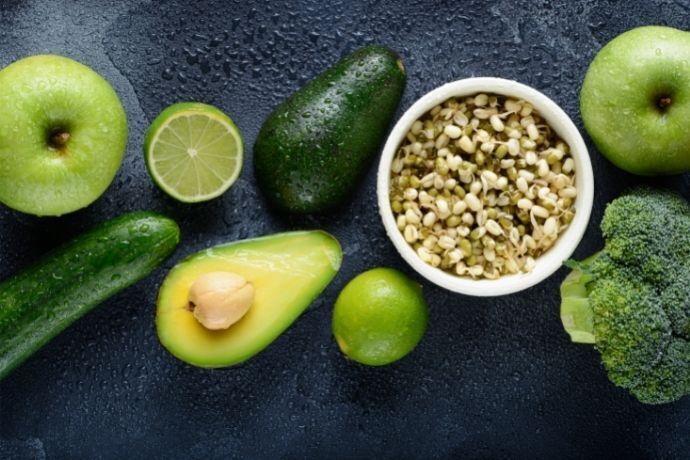
There is a wide variety of fruits that diabetics can consume. However, each one of them, depending on the glycemic index and the quantity, should be eaten with caution, and at specific times. In addition, some should be avoided, as they tend to cause an increase in blood glucose levels. Read on to understand these and other information.
Which fruits should diabetics avoid?
Fruits are an excellent alternative to get around the desire to eat sweets, besides being very nutritious. However, the excess fructose (natural sugar), carbohydrate and few vibrations present in some of them, can be harmful to diabetics. Therefore, avoid eating the following fruits:
- Banana-nanica;
- Watermelon;
- Grape;
- Jackfruit;
- Khaki;
- Dried fruits (raisins, apricots and prunes);
- Fig;
- Tamarind;
- Dates
- Acai.
All the fruits mentioned have a glycemic index from medium to high, so they tend to enter the bloodstream quickly. In addition, the riper the fruit is, the higher the concentration of fructose.
In the case of dried fruit, it is necessary to check the packaging to see if the dehydration process was done with refined sugar. Although these fruits are not recommended for diabetics, it is possible to consume them as long as it is in small quantities and in moderation.
What is the best time to consume the fruit?
So that the absorption of the natural sugar of the fruits takes more time to metabolize in the organism. The ideal is to eat them associated to other foods rich in fiber, proteins and fats. So, the diabetic can consume them before or during lunch and dinner.
At breakfast and afternoon snack, fruits with lots of fiber, like kiwi, fresh plum, strawberry and orange, among others are perfect to control blood glucose. Therefore, the best time is directly linked to the type of fruit, the amount and if it will have some accompaniment.
People with diabetes should be careful with juices
Processed juices are harmful in people with diabetes, due to the high concentration of sugar and chemical additives. The ideal is to ingest natural juices. However, when the fruit is processed, the soluble fibers, for example, are lost, raising blood sugar rates quickly.
Orange, apple, and pear juices, for sure, are the ones that lose their benefits the most and cause an increase in glucose. Despite this loss of vitamins, some fruits are indicated for juicing, such as watermelon, guava, tangerine, papaya, melon, and passion fruit.
Make your diet healthier and see the benefits in your life!
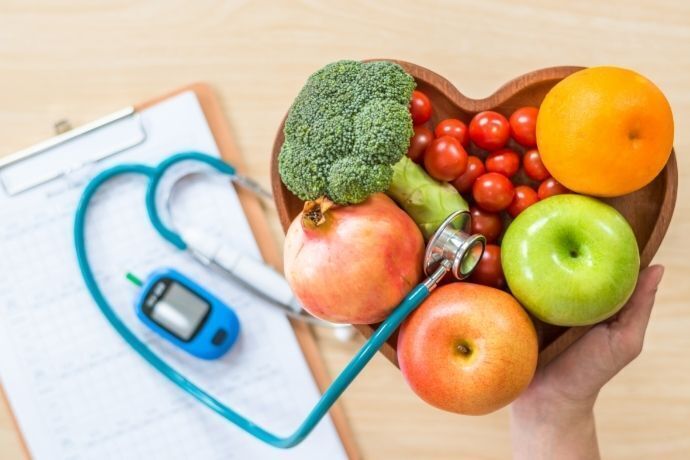
Diabetics and pre-diabetics need to modify their lifestyles to avoid possible complications of the disease. Correct treatment and a healthy diet are essential to keep blood glucose levels under control.
Fruits have a very important role, because besides their nutritional benefits, they help to contain the desire to eat sweets. After all, poor quality foods are extremely harmful to health. Allied to bad habits such as a sedentary lifestyle and addictions, the number of cases of diabetes increases more and more, in Brazil and worldwide.
Therefore, it is worth including and getting into the habit of eating fruit daily. Even though diabetes still has no cure, with healthy practices, it is possible to lead a normal, long and happy life. It is important to emphasize that this article is informative and only a nutritionist can indicate a personalized diet for each person.

